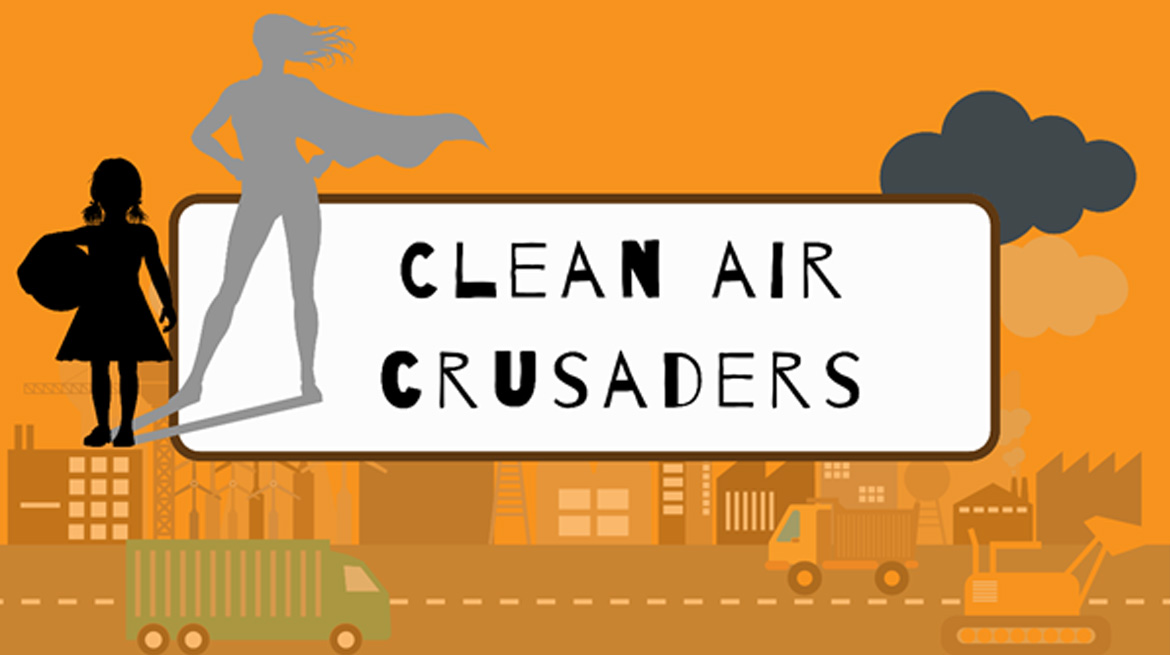In today’s world, air pollution has transformed from a silent threat into a loud and urgent alarm, demanding immediate attention. Working in healthcare, we often come across the devastating consequences of air pollution, sometimes without even realizing it. From respiratory emergencies to cardiovascular diseases, air pollution quietly erodes our well-being. However, of all the age groups affected, children are particularly vulnerable due to their physiology and environment.
Why are children more at risk? Their narrow airways, developing lungs, and faster respiratory rates mean they inhale more pollutants than adults. A vital part of their day is outdoor playtime, which can expose them to pollutants. When inside, they may be around their mothers who are cooking, further increasing their exposure to indoor air pollution. Children in urban slums face additional risks – poor ventilation, overcrowded living conditions, and limited access to healthcare. Despite being more susceptible, children are often the least equipped to adapt to these challenges.
In India, air pollution is a serious issue, and steps are being taken to address it under the National Programme for Climate Change and Human Health. The Ministry of Health and Family Welfare recognized the need to educate children and released a training manual in 2022 that provides practical and age-appropriate strategies to teach kids about air pollution and its effects on health. This initiative seeks to bridge the information gap and empower the next generation with knowledge.
While breaking it down for kids, the first step is helping them understand what air pollution is and where it comes from. Air pollution can be complex, with terms like “particulate matter” and “carbon monoxide”, but can simplified by presenting these pollutants as “invisible dust and gases” that make the air “unhealthy”. A critical point to emphasise is that the air may look clean to the naked eye, but invisible pollutants could still be present. One simple experiment that helps kids visualise this idea is the “Candle and Soot” activity. In a classroom setting, the teacher lights a candle and asks the students whether they think the flame is polluting the air. Most children, unable to see any visible smoke, will say no. However, by holding a glass over the flame until soot collects on its surface, the students will begin to see the blackened glass and realise that even if not visible, smoke from a candle can pollute the air.
Once children have grasped the basics, the next step is to introduce the primary sources of air pollution—vehicles, factories, and construction activities. Importantly, they must also be made aware of indoor pollutants. Many families in India still use wood or cow dung as cooking fuel, which releases harmful pollutants. Other common sources include incense sticks and mould growth in poorly ventilated spaces. By encouraging children to recognise that such examples are all around us, we can have them reflect on their daily routines and identify activities that might contribute to air pollution.
With this foundation, children can then be introduced to the concept of the “Air Quality Index” (AQI). The AQI provides a clear indication of whether the air in a particular area is safe to breathe. Most children now have access to the Internet, either through their own devices or their parents. They can be taught to use apps such as SAFAR or SAMEER to check the AQI in their area. A useful metaphor is to think of the AQI as a traffic light: if the colour tilts toward red, they should avoid going out or take precautionary measures like wearing a mask. This is easier said than done because playtime is often sacred to children, and convincing them to stay indoors on days when the air quality is poor can be difficult. One way to make this concept relatable is through a breathing exercise. First, ask students to take deep, slow breaths to help them relax. Then, have them jump up and down for 30 seconds and ask them to focus on their breathing afterwards. They will notice that their breathing has sped up, which means they’re inhaling more oxygen. Now, similarly, when they play outside, they will end up inhaling more pollutants if the AQI is poor. Simple quizzes can also drive home the point. For example, ask them, “The AQI app shows a red colour, but it looks clean outside. Should your grandmother with asthma go grocery shopping today?” This kind of activity teaches them not only to make informed decisions for themselves but also to take responsibility for the well-being of their families.
Another crucial area to focus on is symptom recognition. Children often struggle to identify when they’re feeling unwell, leading to delays in seeking medical help. Headaches, coughing, sneezing, and dizziness can all be signs of exposure to polluted air, just as much as they can be symptoms of other illnesses. Kids should be encouraged to inform their parents and seek help if they notice these symptoms, particularly if they worsen over time.
As we look toward November, there are many opportunities for air pollution advocacy and education among children, including World Pneumonia Day on November 12, Children’s Day on November 14, and World COPD Day on November 20. Teaching children about the science of air pollution and providing them with actionable strategies to protect themselves does more than just educate them—it empowers them. These young clean-air crusaders, equipped with knowledge and a sense of responsibility, are likely to influence their peers, families, and communities. Empowered with the right tools and knowledge, they can advocate for cleaner air, healthier habits, and greater environmental responsibility.





Well written post